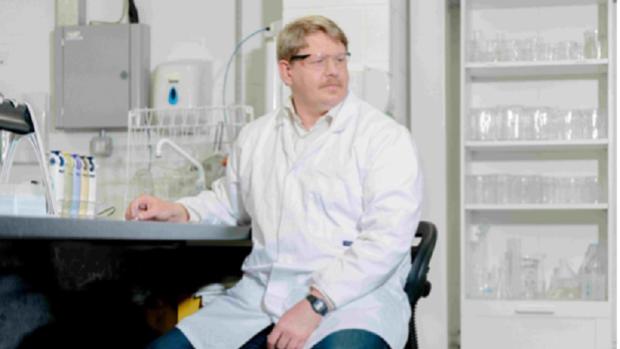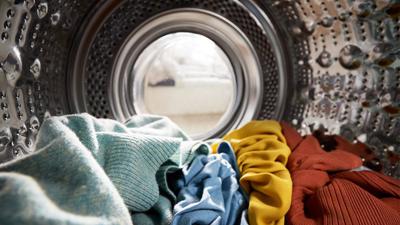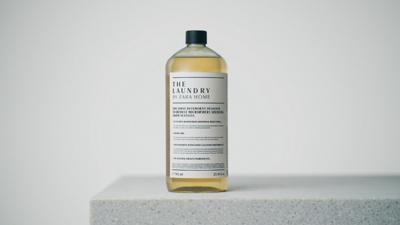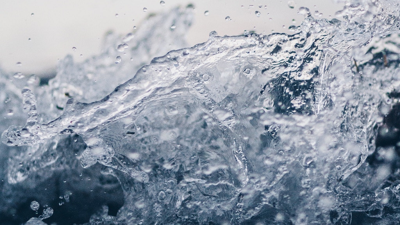Interview with Dr. Paul Servin, Xeros

Paul Servin (Source: Xeros)
It is estimated that every year more than 500,000 tons of microfibers are released into the oceans worldwide simply from washing our clothing. Research shows that microfibers from synthetic textiles (known as microplastics) are one of the biggest sources of microplastic pollution in the sea. Therefore, combating global plastic pollution is an important goal.
Is there a way to prevent this microplastic from entering wastewater?
Yes. Microfiber filtration installation is a readily available and effective near-term solution. Our washing machine filter, XFilter, captures over 99% of microplastics.
Wastewater treatments are often put forward as a solution. However, the reported removal efficiencies of Wastewater Treatment Plants (WWTPs) can vary from 35-99.9%. Additionally, many WWTPs spread the sewage sludge as fertilizer, something commonly done in the USA and UK. This means the captured microplastics are still entering the environment as an uncontrolled pollution.
We also need to look at long-term solutions that address clothing overproduction and overconsumption, as well as root-cause change at material design level, maximum thresholds on microplastic release. Even natural fibers can be a problem due to the chemicals added through the production process.
Today, the installation of microfiber filters such as XFilter to laundering appliances presents itself as an immediate and effective solution. In order to provide a holistic solution, the filters need to not only be in household washing machines but also in laundries and within the textile industry.
To achieve the lowest LCA impact, minimizing its impact on the planet, XFilter is designed to last the lifetime of a washing machine with no replacement cartridges.
Yes. Microfiber filtration installation is a readily available and effective near-term solution. Our washing machine filter, XFilter, captures over 99% of microplastics.
Wastewater treatments are often put forward as a solution. However, the reported removal efficiencies of Wastewater Treatment Plants (WWTPs) can vary from 35-99.9%. Additionally, many WWTPs spread the sewage sludge as fertilizer, something commonly done in the USA and UK. This means the captured microplastics are still entering the environment as an uncontrolled pollution.
We also need to look at long-term solutions that address clothing overproduction and overconsumption, as well as root-cause change at material design level, maximum thresholds on microplastic release. Even natural fibers can be a problem due to the chemicals added through the production process.
Today, the installation of microfiber filters such as XFilter to laundering appliances presents itself as an immediate and effective solution. In order to provide a holistic solution, the filters need to not only be in household washing machines but also in laundries and within the textile industry.
To achieve the lowest LCA impact, minimizing its impact on the planet, XFilter is designed to last the lifetime of a washing machine with no replacement cartridges.
Can this filtered microplastic material still be upcycled?
Yes. Studies are emerging that look into providing a use for microfiber material. We are currently working with the University of Surrey to jointly fund pioneering research to upcycle the microfiber captured from laundering clothes into a useful and valuable carbon material. The study uses a pyrolysis approach that could upcycle the blend of microfiber without requiring separation.
In which applications could this new material be used?
The method used in this study produces clean hydrogen and solid carbon nanomaterials as a by-product. The carbon nanomaterials developed using this upcycling method can be used in various essential products including pigment, water/air purification, batteries, solar cells and medical devices. Based on the outcome of the project we will decide upon the most environmentally favorable and valuable upcycled use.
What quantities will be produced? Is this sufficient for industrial use? Can this resource be combined with other waste products?
It’s early days at the moment and everything is taking place at a lab scale. We will have less than 1 kg of pyrolyzed coming out of the process and without scaling up or, more importantly, without a recycling system that separates out the captured microfibers from laundry machines, tumble dryers and vacuum cleaners we will not accomplish sufficient quantities for industrial use. Together with University of Surrey we are looking at microfibers from washing machines and tumble dryers and once this project is successful the airborne microfibers that have been collected in the vacuum cleaner should also be brought into the process.
Does the approach "waste products are valuable raw materials" apply to you? Could this be a way to address the issues of "sustainable business" and "resource independence"?
I absolutely agree with that, waste products are valuable raw materials – as the saying goes one person’s trash is another person’s treasure. However, if the waste is being generated too far away from the logistics and supply chain of the business, and the waste is upcycled into non-business-related products, then it will be difficult to handle and monitor this in-house. Nevertheless, businesses do need to support these new developments.
The interview was conducted with the TextileTechnology team with Dr Paul Servin, Applications Development Director at Xeros Technology, Rotherham/UK.



